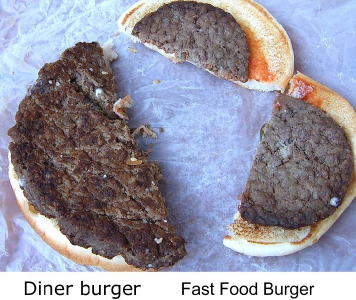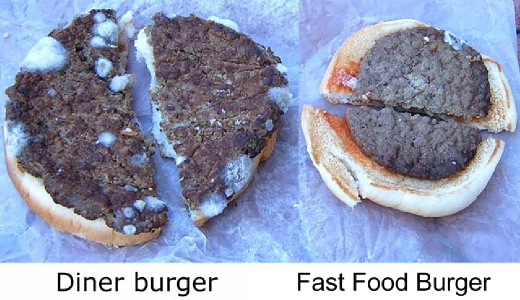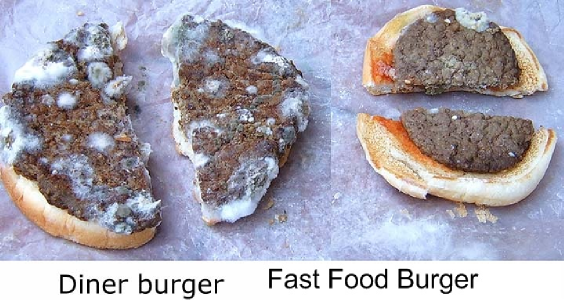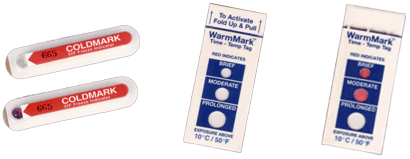Imperial/Cell by Date/Introduction
From 2007.igem.org
m (→Cell by Date Summary) |
m (→Ensuring the Freshness of Beef) |
||
| Line 36: | Line 36: | ||
===== Ensuring the Freshness of Beef ===== | ===== Ensuring the Freshness of Beef ===== | ||
A lot of work has been carried out to study the spoilage of the beef that make up our burgers. In fact, there are professional organisations such as FDA and HACCAP that give strict regulations to ensure the quality of beef that meat industries produce. | A lot of work has been carried out to study the spoilage of the beef that make up our burgers. In fact, there are professional organisations such as FDA and HACCAP that give strict regulations to ensure the quality of beef that meat industries produce. | ||
| - | |||
| - | |||
| - | |||
| - | |||
| - | |||
<font color=red>--[[User:Anthony L|Anthony L]] 20:15, 25 October 2007 (EDT)Would like someone to come along and make these 3 images fit into white part. At the moment height of all images are 300px the size of all images need to be changed while conserving the aspect ratio eg. ratio of width to height</font> | <font color=red>--[[User:Anthony L|Anthony L]] 20:15, 25 October 2007 (EDT)Would like someone to come along and make these 3 images fit into white part. At the moment height of all images are 300px the size of all images need to be changed while conserving the aspect ratio eg. ratio of width to height</font> | ||
| Line 48: | Line 43: | ||
|[[Image:Burger1.png]] || [[Image:Burger2a.png]] ||[[Image:Burger3.png]] | |[[Image:Burger1.png]] || [[Image:Burger2a.png]] ||[[Image:Burger3.png]] | ||
|} | |} | ||
| + | |||
| + | As consumers, we can see this in our supermarkets in the form of a printed ‘sell by date’, which is based upon challenge testing - a process in which beef is put through numerous temperature scenarios and a prediction then made about how long the beef will last after it has left the factory. Due to safety reservations, this prediction made on printed sell by date often indicates that the beef is off when in may in fact have a few days left. | ||
| + | |||
| + | On the other hand, survey studies have shown that temperature conditions higher than 10°C are not unusual during transportation, retail storage, and consumer handling of beef products. Such temperature abuses during any stage of the cold chain could result in an unexpected loss of quality and a significant decrease of shelf life. Indeed, printed sell by date labels are seldom the best estimate of meat shelf-life. To this, the meat industry has looked into other ways of prediction and managing the cold chain. | ||
===== Temperature Time Integrators ===== | ===== Temperature Time Integrators ===== | ||
Revision as of 00:22, 26 October 2007

gajsa
Cell by Date Summary
Cell by Date is a Temperature Time Integrator, and will report when ground beef has been out of the cold chain for too long (the cold chain being the temperature controlled transport chain from abbatoire to supermarket). Cell By Date does this by exploiting the thermal dependence of gene expression systems to express fluorescent proteins at ambient temperatures above 8°C. By using simple constructs, Cell by Date allows the characterisation of the various cell-free chassis, enhancing our understanding of this foundational technology.
Cell by Date in the Cold Chain
--Anthony L 20:12, 25 October 2007 (EDT)Would like someone to come along and make me an image of same size 900x140 pixels describing in a cool fun way the cold chain and where cell by date fits in
Motivations
The hamburger has become synonymous with modern western culture. We see it in fast food chains , ready-made packages in supermarkets, and at most home barbeques - all made using ground beef. But who controls the quality of our burgers, who ensures that the burgers we eat don’t spoil the fun and make us sick?
Ensuring the Freshness of Beef
A lot of work has been carried out to study the spoilage of the beef that make up our burgers. In fact, there are professional organisations such as FDA and HACCAP that give strict regulations to ensure the quality of beef that meat industries produce.
--Anthony L 20:15, 25 October 2007 (EDT)Would like someone to come along and make these 3 images fit into white part. At the moment height of all images are 300px the size of all images need to be changed while conserving the aspect ratio eg. ratio of width to height
 |  | 
|
As consumers, we can see this in our supermarkets in the form of a printed ‘sell by date’, which is based upon challenge testing - a process in which beef is put through numerous temperature scenarios and a prediction then made about how long the beef will last after it has left the factory. Due to safety reservations, this prediction made on printed sell by date often indicates that the beef is off when in may in fact have a few days left.
On the other hand, survey studies have shown that temperature conditions higher than 10°C are not unusual during transportation, retail storage, and consumer handling of beef products. Such temperature abuses during any stage of the cold chain could result in an unexpected loss of quality and a significant decrease of shelf life. Indeed, printed sell by date labels are seldom the best estimate of meat shelf-life. To this, the meat industry has looked into other ways of prediction and managing the cold chain.
Temperature Time Integrators
One particular technology is a family of devices called temperature time integrators (TTIs). These devices try to monitor the thermal exposure of the food. When a certain level of exposure is reached, a change occurs, usually visual, which signals that the beef has gone off.
This project is concerned with the development of a TTI that is based upon synthetic biology components; exploiting the thermal dependence of gene expression of simple reporter system in a cell free extract.
With an idea of the problem we are trying to target head on to our specification page where we take the first step in our engineering cycle to ensure the quality, relevance and robustness of our solution.
Achievements
put achievements here or in main page?
References
Food Hygiene, Microbiology and HACCP
[http://www.sensitech.nl/en/index.html Sensitech Company]
[http://www.sensitech.nl/en/coldchain_info/index.html Sensitech Cold Chain Background]
[http://www.sensitech.nl/en/products/index.html Sensitech Products]
[http://www.globalcoldchain.com/ Global Cold Chain Company]
[http://www.who.int/vaccines-documents/DocsPDF/www9804.pdf WHO : Temperature Monitors for vaccines and the Cold Chain]
[http://www.foodproductiondaily.com/news/ng.asp?id=51051-diagnostic-packaging-potential FoodProductionDaily.com Overview of Industry]
[http://www.packaging-gateway.com/downloads/conferences/PACE/PackagingBrody_Inc_Prsntation_4.pdf Brody 2006 Good overview of industry including active packaging]
[http://www.foodtechsource.com/emag/003/trend.htm Interview with Labuza about food law]
[http://aem.asm.org/cgi/reprint/72/7/4663 Ercolini,2006 : 5 Degrees Isothermal conditions varying Packaging]

